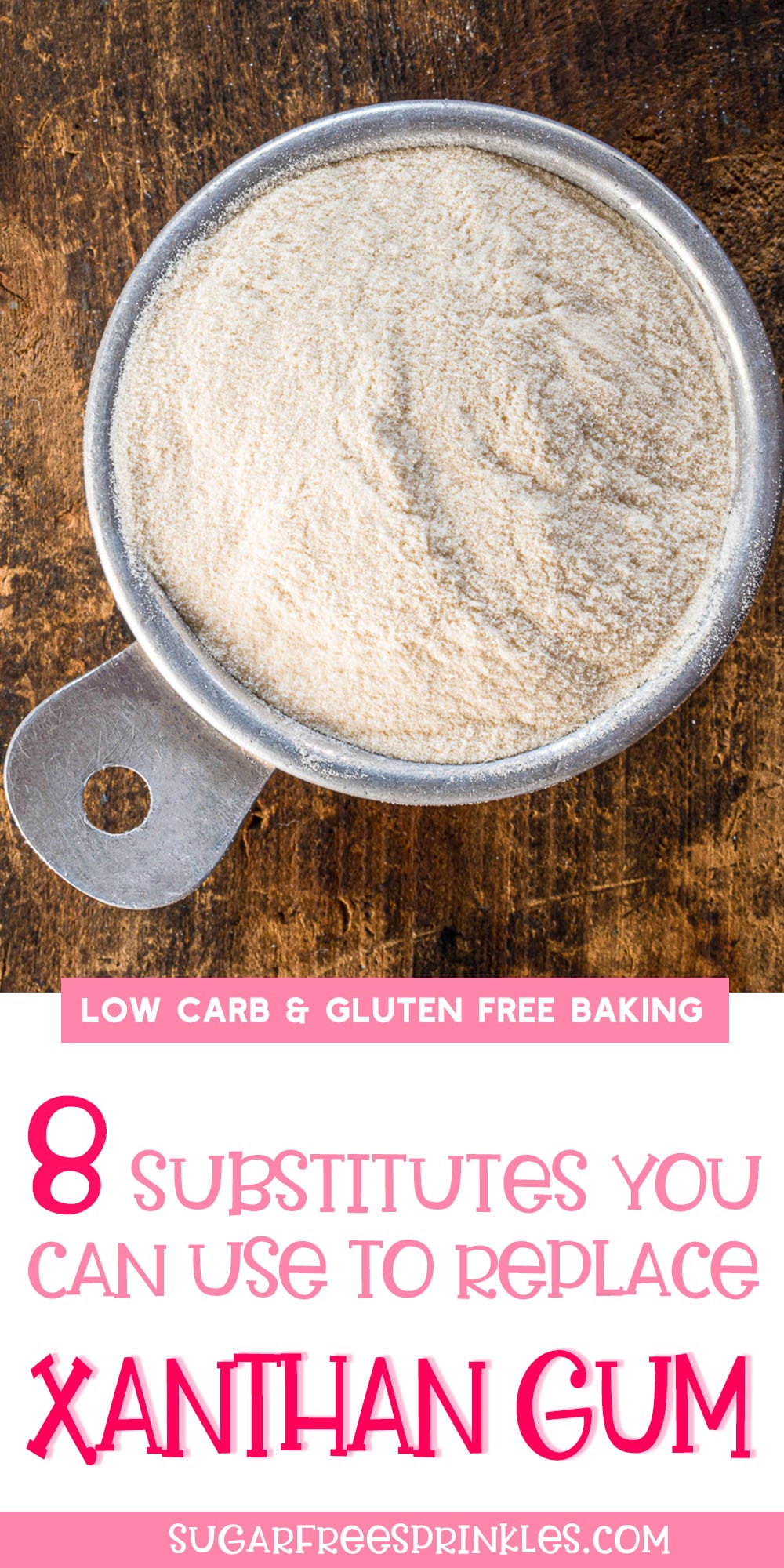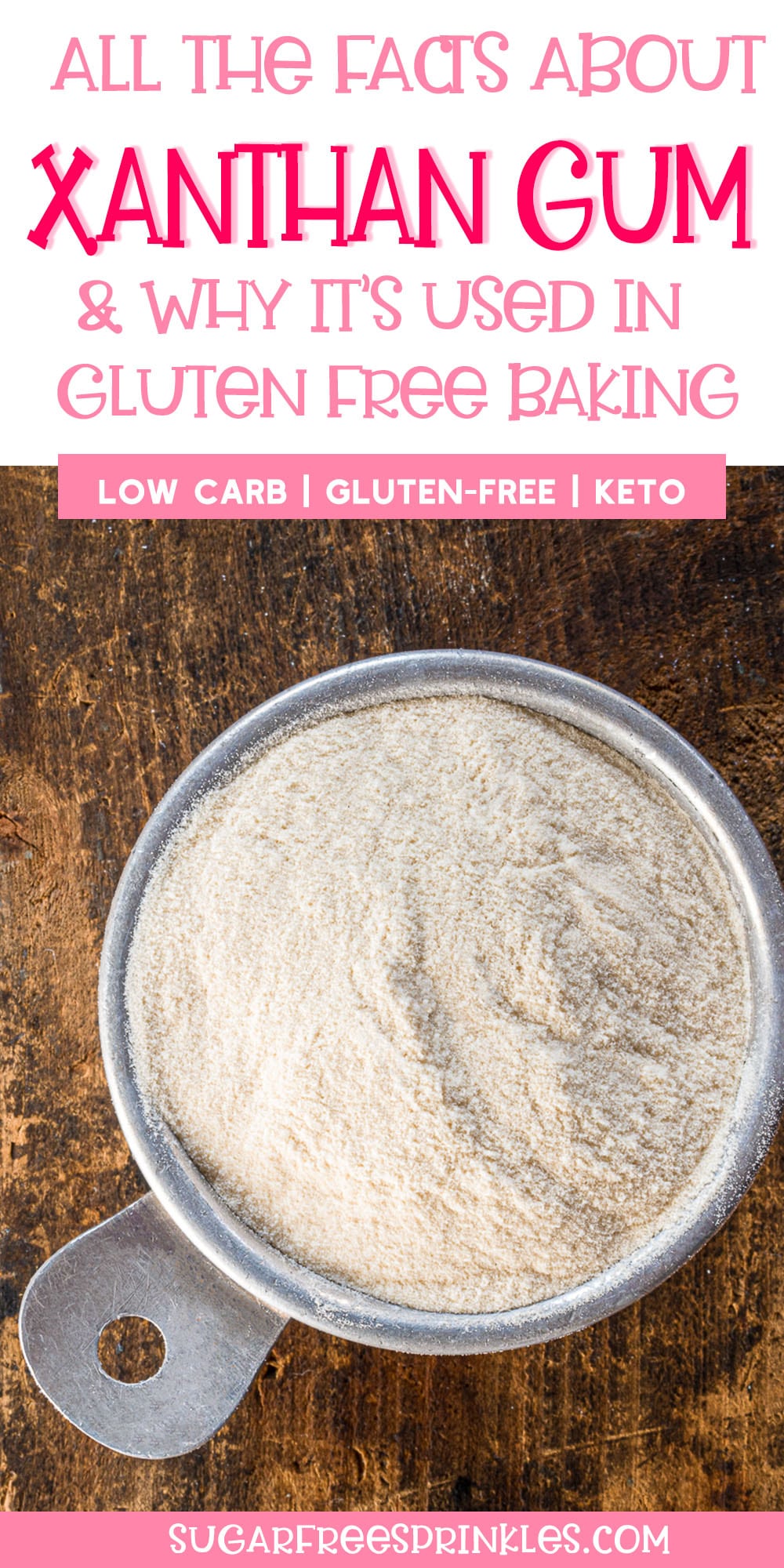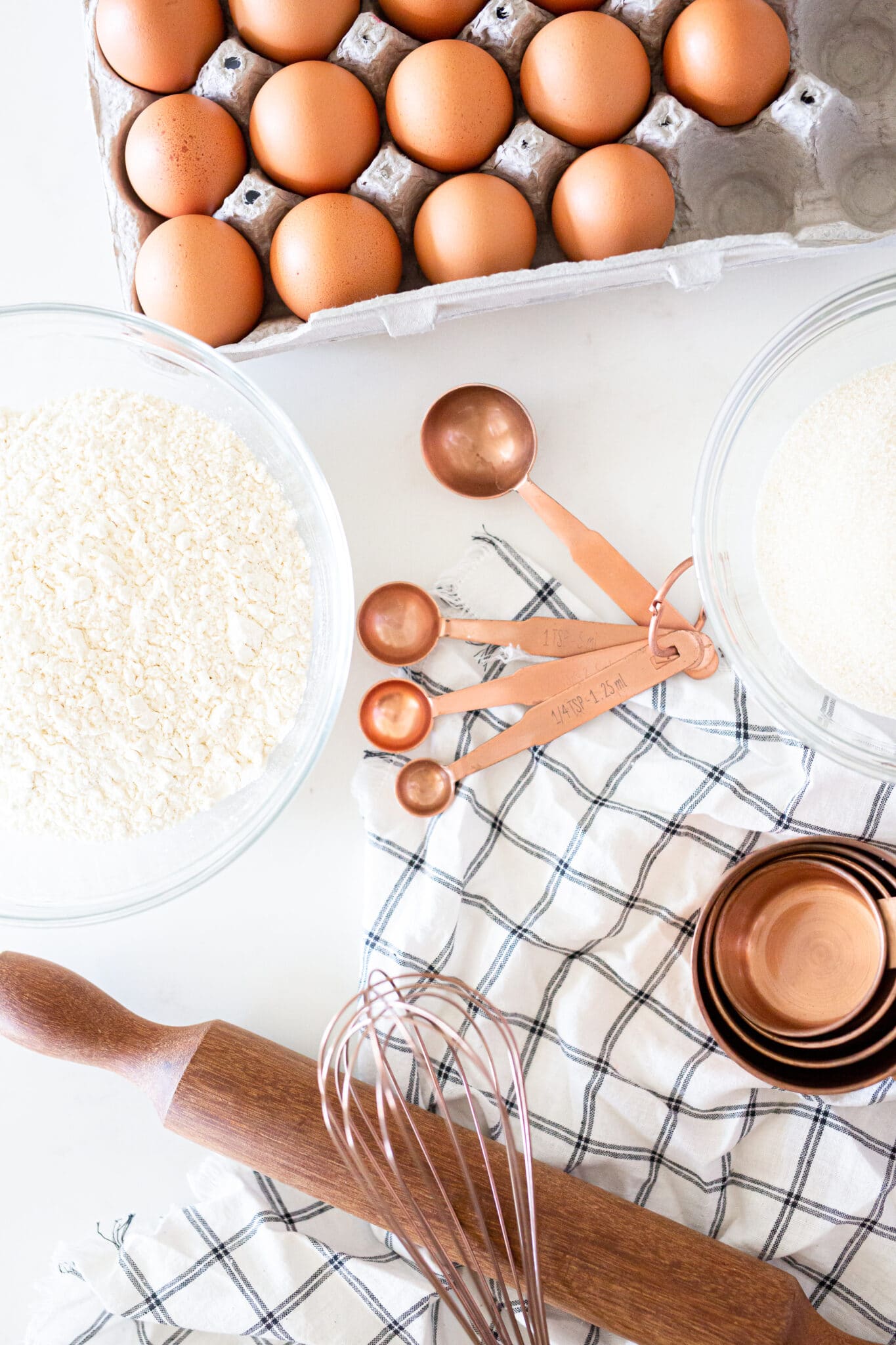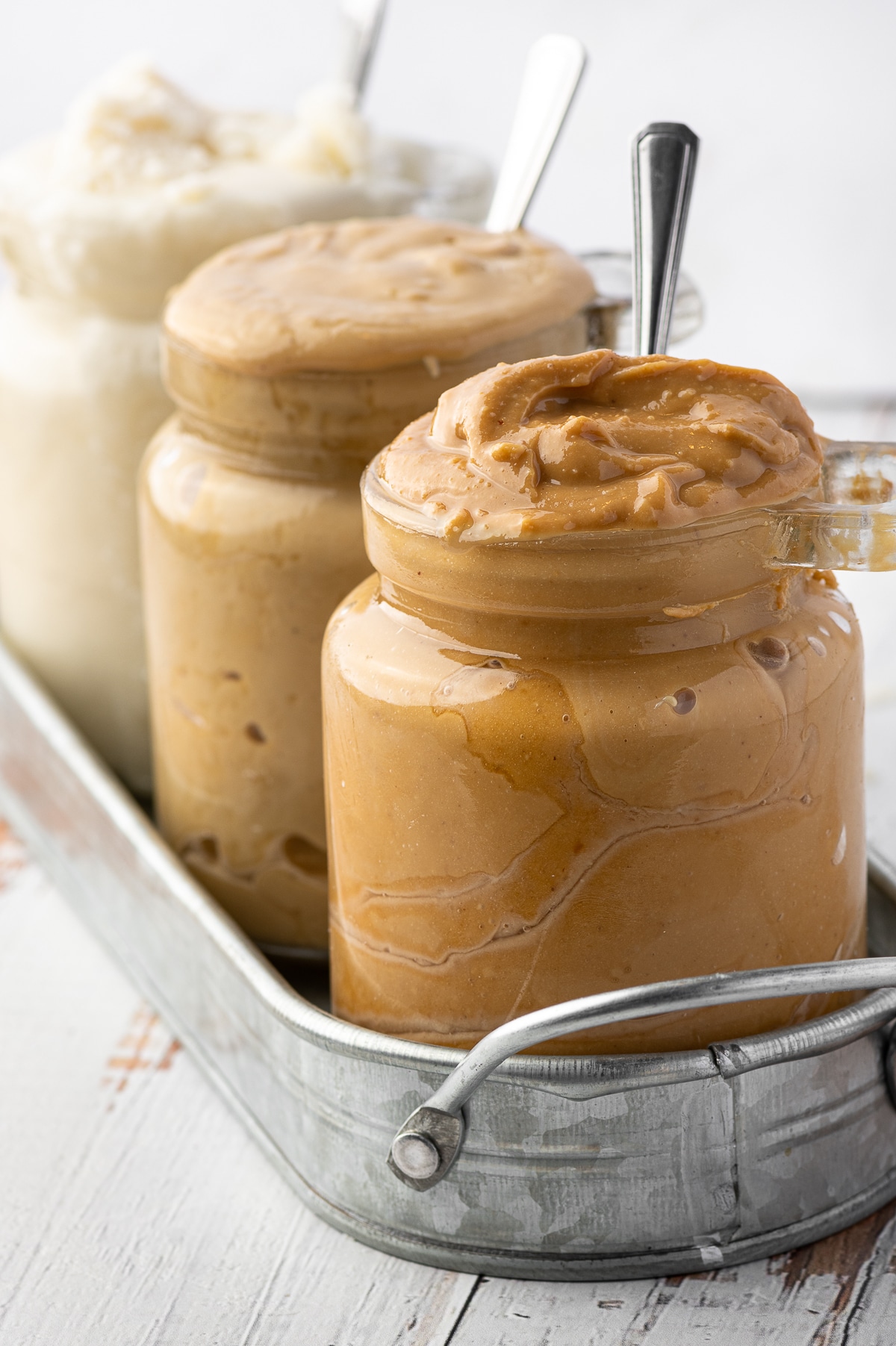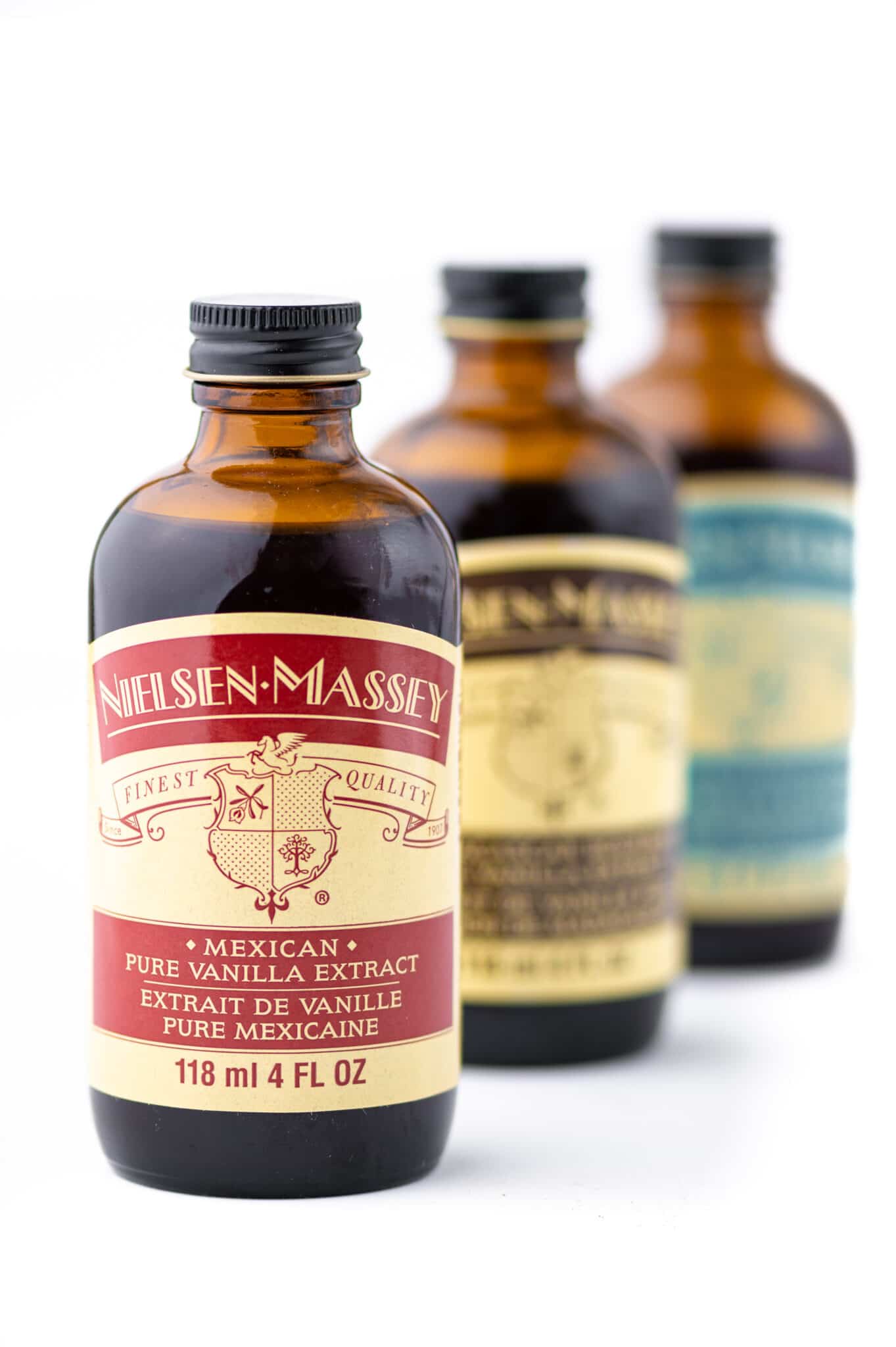Xanthan Gum Substitutes: Here’s Everything You Need To Know
Looking for a simple swap to save your gluten-free recipe? Don’t worry—we’ve got you. Run out of xanthan gum at the worst possible moment? It happens! But plenty of easy alternatives will keep your bakes on track, no matter what you’re making—from cookies to bread to sauces.
In this guide, we’ll walk you through what xanthan gum does, why it’s essential in gluten-free baking, and, most importantly, what you can use instead. We’ve even included a handy quick-reference chart and tips for different recipes so you can get back to baking confidently. Let’s get started!
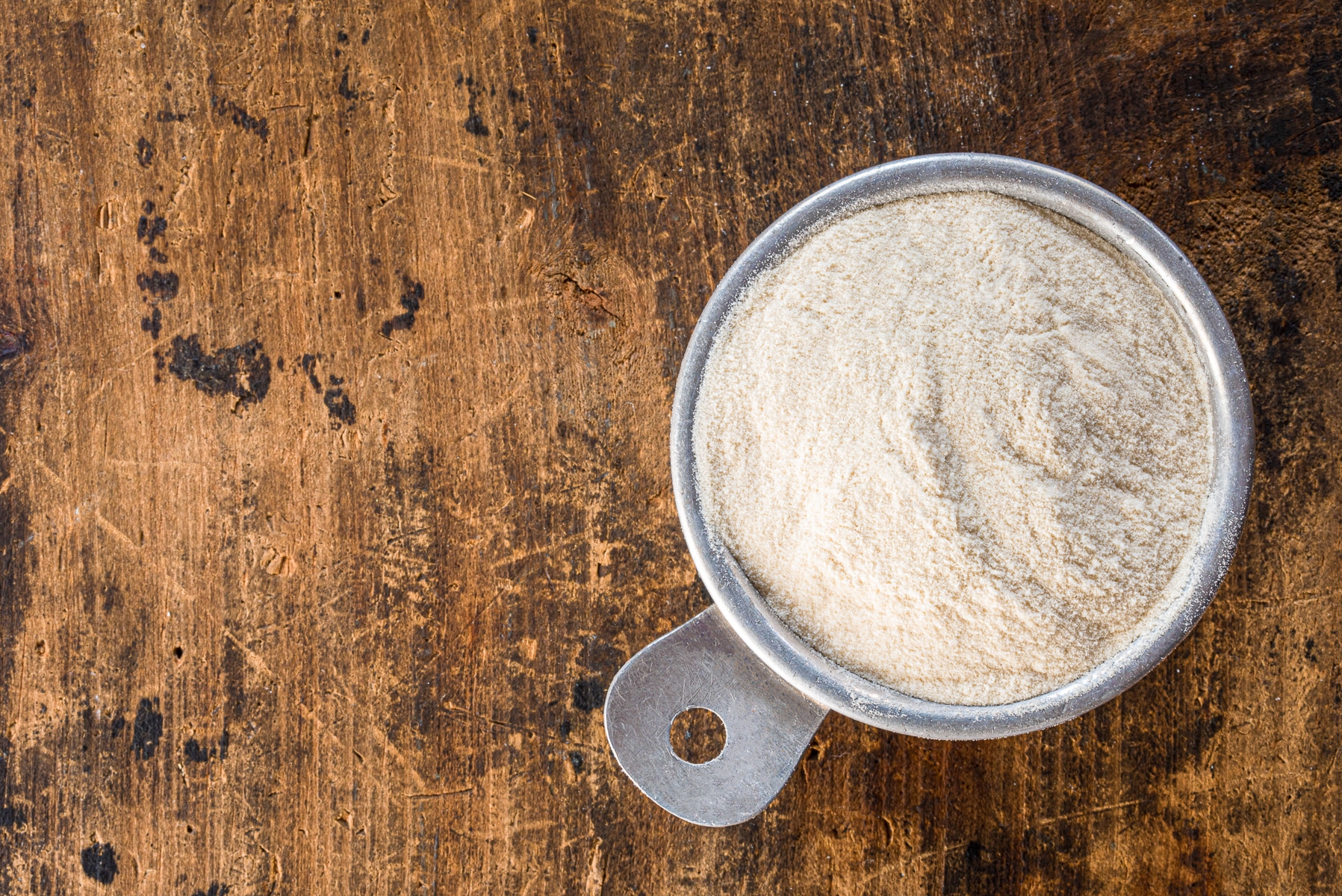
Table of contents
What Is Xanthan Gum?
Simply put, xanthan gum is a food additive used as a thickener or stabilizer.
Xanthan gum is created when a bacteria called Xanthomonas campestris ferments sugar. This created a broth or goo-like substance. After they add some alcohol, it becomes solid – which they can then dry out and turn into a powder.
Then, when you and I add xanthan gum powder to liquid recipes, it creates a vicious and stable solution.
This food additive is entirely created in a lab, and the FDA has approved it as safe. It is a soluble fiber, a carb your body cannot break down. It absorbs water and slows down digestion. Since your body can’t digest it, it has no calories or nutrients.
Why Is Xanthan Gum Important In Keto and Gluten-Free Baking?
Since so many carbs in recipes come from flour (gluten), many low-carb and keto recipes use other types of flour, such as almond flour. That’s why pretty much all keto-friendly recipes are gluten-free.
But, because you use flours with zero gluten, you need some binder to hold your baked goods together- and that’s where xanthan gum comes in. It mimics gluten when you bake. Xanthan gum holds all the ingredients together, making the dough gummy and sticky.
If you try to bake without it (or another xanthan gum substitute), your recipe will fall apart.
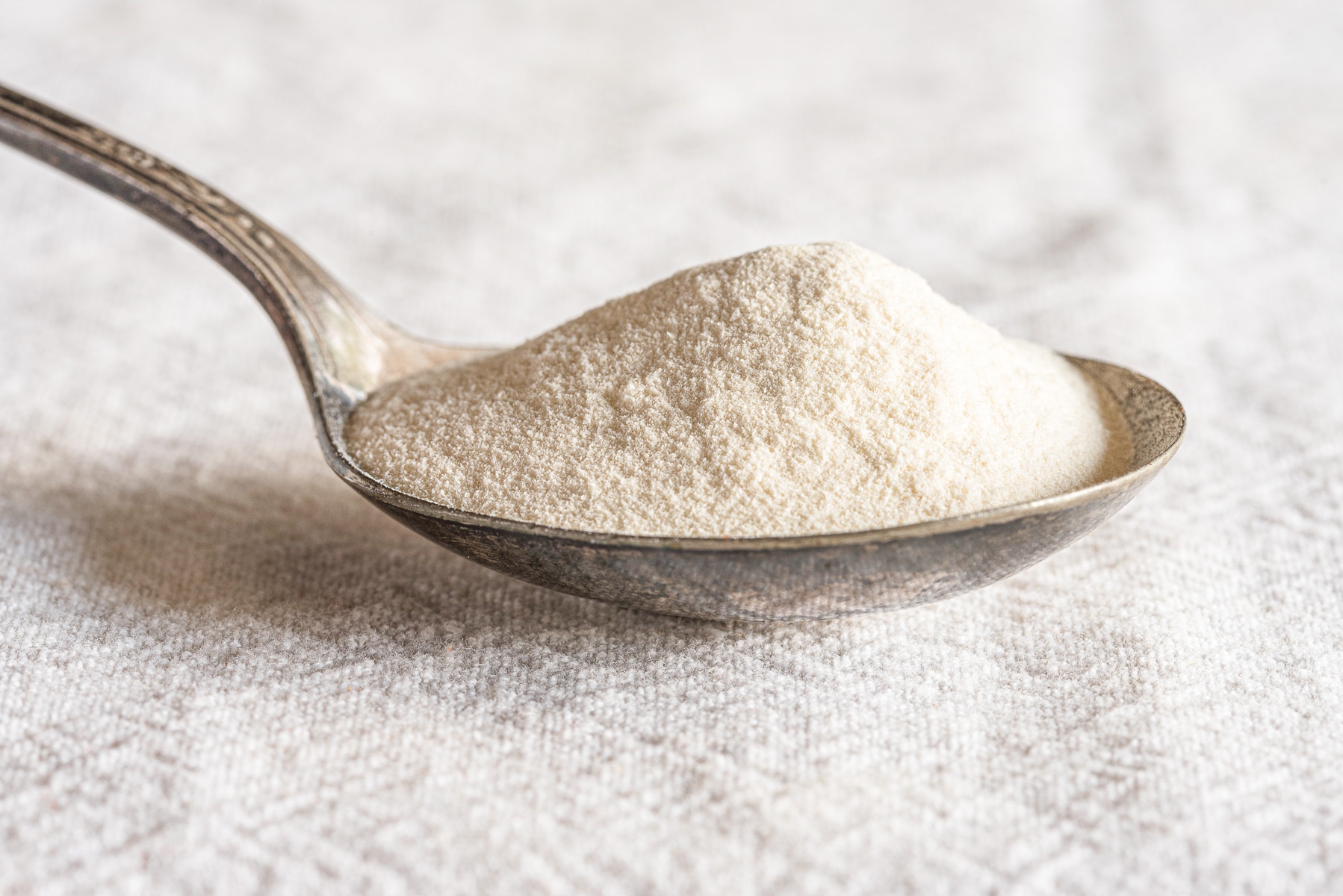
Uses For Xanthan Gum in keto and gluten-free Baking
Before moving on to the different substitutions, let’s look at how to use xanthan gum in baking and cooking.
There are four main things it does:
1. Makes Sauces Thicker
Have you ever made a gravy with a roux made of flour and butter? Well, without that roux, you’ll end up with soup, not gravy!
When you are eating gluten-free or low-carb, you need another option, and that’s where xanthan gum comes in. It will thicken gravies and even sugar-free syrups.
We use it in several thickened sauce-based recipes on the site, like our super popular lemon tart recipe.
2. Replaces Gluten In Baking
Xanthan gum acts as a binding agent to the dough in gluten-free baking. Instead of just falling apart, adding xanthan gum helps the dough stick together and makes it stretchy.
You can see how perfectly the layers of this vanilla layer cake hold together.
3. Stabilizes Salad Dressings
If you try mixing oil and vinegar, you know they’ll separate easily. Even though xanthan gum is not an emulsifier, it can help to prevent oil from separating. It also keeps the spices and seasonings suspended, making them easier to mix into your salad!
4. Makes Ice Cream Smoother
This is a surprising benefit of xanthan gum that not many people know!
Since it interacts with liquids and changes its texture, it can make ice cream smoother. It prevents ice crystals from forming inside the ice cream, and it only takes a small amount to work.
If you have ever tried to make homemade ice cream from non-dairy milk like soy, almond, or coconut, you know the struggle to obtain that creamy consistency. Try adding a little xanthan gum and see how it elevates it!
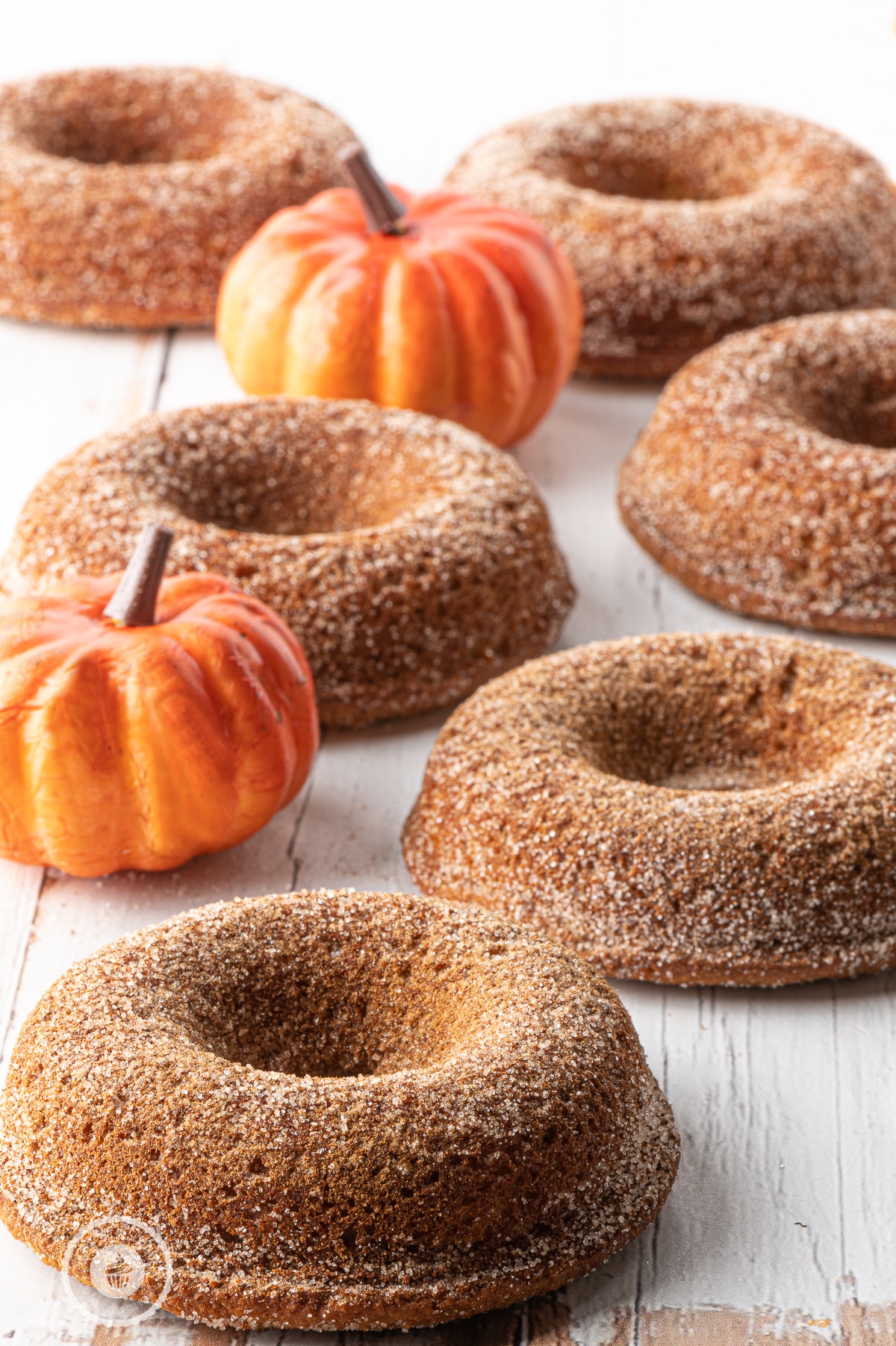
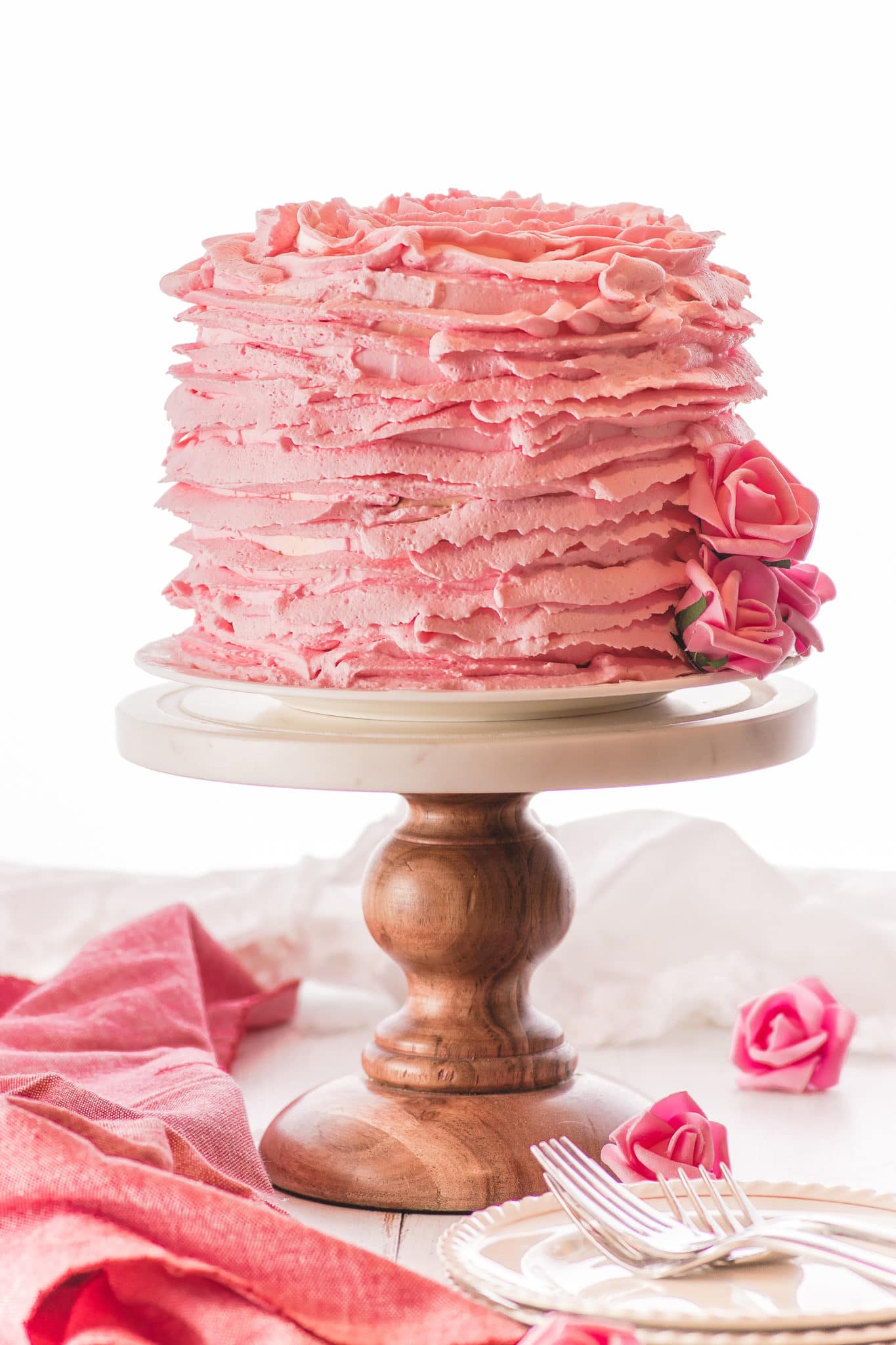
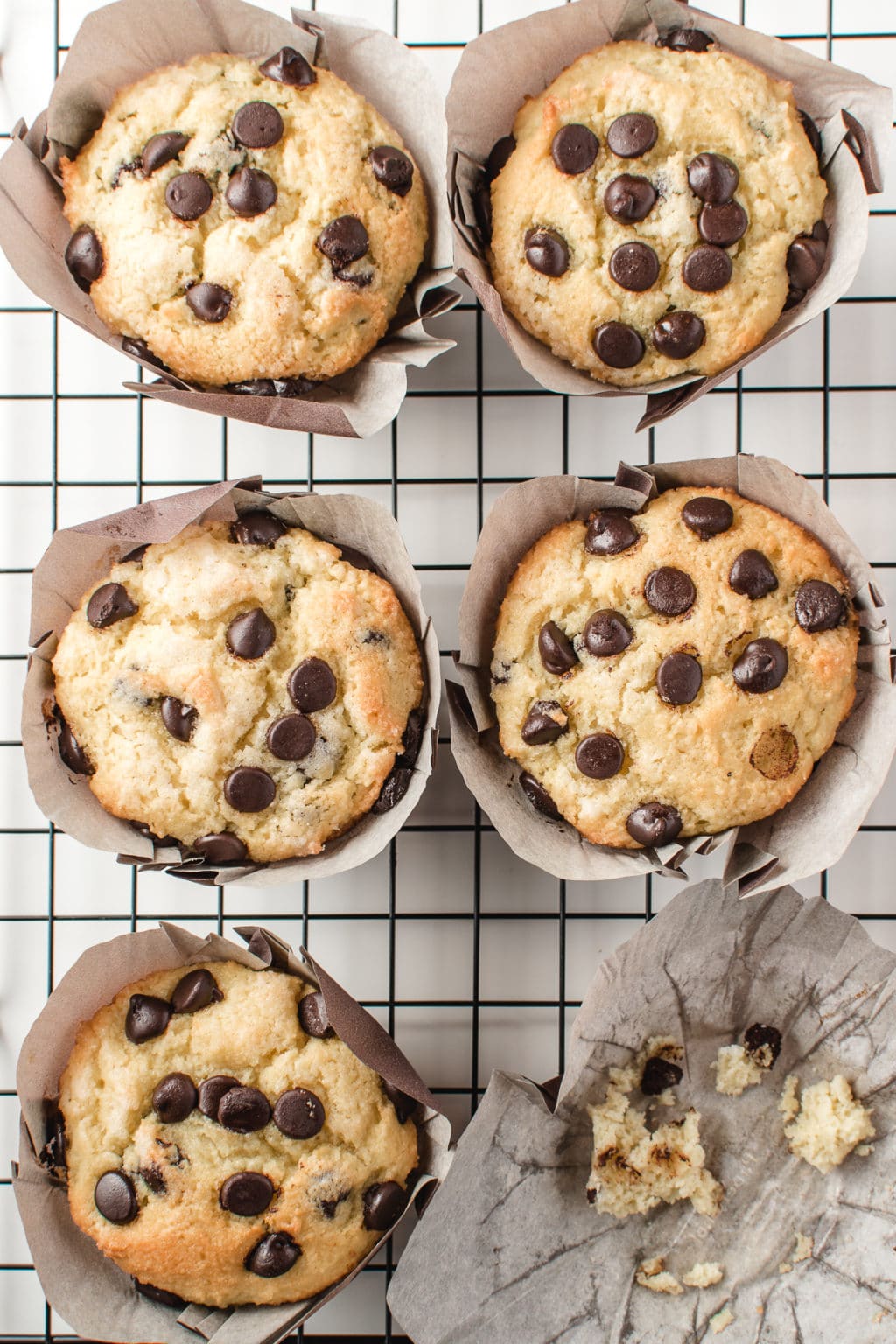
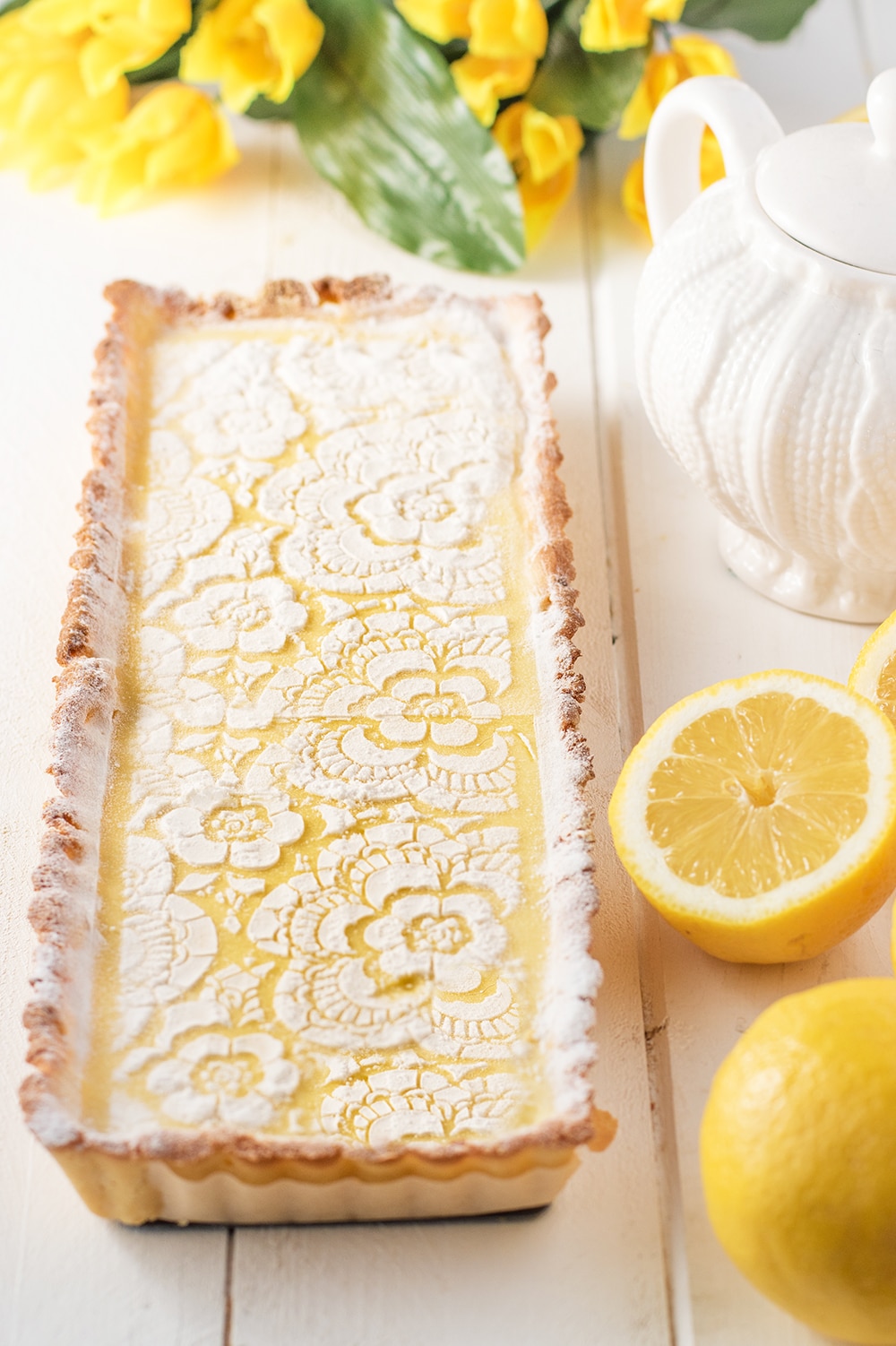

Options For Xanthan Gum Substitutes
You’ve probably wondered, “What can you use instead of xanthan gum in gluten-free baking?”. I know how it feels. You are so excited about baking only to realize that you don’t have any xanthan gum!
Well, don’t fret. Eight different ingredients work in a similar way to Xanthan gum.
Every recipe is different – and not all substitutions will work 100%, but this is a list of suggestions of ingredients that you can test if you do not have xanthan gum on hand.
Xanthan Gum Substitute Chart
To make things easier – Here is a xanthan gum substitute chart – each recommendation has an explanation below, including how to use it and where it is best used.
| Substitute | Pros | Cons | Ratio to Replace Xanthan Gum | Best Use Cases |
|---|---|---|---|---|
| Psyllium Husk | Adds fiber, holds moisture | Can alter flavor slightly | 2:1 | Bread, pizza dough |
| Cornstarch | Readily available, easy to use | High in carbs, not keto-friendly | 1:1 | Sauces, gravies |
| Unflavored Gelatin | Excellent binder, adds chewiness | Not vegan or vegetarian | 2:1 | Bread, muffins |
| Guar Gum | Vegan, great for gluten-free | It needs to be dissolved first | 3:1 | Cakes, muffins, desserts |
| Chia Seeds + Water | Nutrient-rich, plant-based | Can change texture, longer prep | 1:1 with 2 parts water | Cookies, muffins |
| Agar-Agar | Vegan, excellent for thickening | It can add a nutty flavor | 1:1 | Sauces, ice cream |
| Ground Flax Seeds | Adds nutrients, vegan-friendly | 1:1 with two parts water | 1:1 with 2 parts water | Cookies, pancakes |
| Egg Whites | Readily available, adds structure | Not suitable for vegans | 1 egg white per tablespoon | Cakes, muffins, cookies |
1. Psyllium Husk
You can use psyllium husk in a 2:1 ratio to replace xanthan gum. Psyllium husk is made from the husks of Plantago ovate seeds. Like xanthan gum, it is a soluble fiber that forms a gel-like substance when mixed with liquids. To replace xanthan gum, use twice as much psyllium husk.
2. Cornstarch
Cornstarch is one of the options on this list, and it is gluten-free but not keto-friendly. It’s a highly absorbent thickener, and you can use it as a direct 1:1 substitute for xanthan gum. It does have lots of carbs in it, however, so it’s not a good choice for low-carb baking.
3. Unflavored Gelatin
Unflavored gelatin is made from animal collagen. It is an excellent choice for baking things like bread or muffins. To use it as a xanthan gum substitute, you’ll need 2 parts of gelatin for every 1 part xanthan gum.
Remember that gelatin isn’t vegan or vegetarian since most of it is made from pigskin.
4. Guar Gum
Another name for guar gum is Guran, which is made from guar beans. It isn’t as effective as xanthan gum, so you’ll need 3 parts of guar gum for every one part of xanthan gum.
5. Chia Seeds And Water
Chia seeds are an excellent replacement for xanthan because they are plant-based and full of nutrients (unlike xanthan gum). The only downside is that you must use water and add more time to your baking time.
Soak chia seeds in 2 parts water for 1 part chia seeds. Stir until the mixture becomes viscous (gooey).
6. Agar-Agar
Agar-agar is made from red algae and behaves just like unflavored gelatin. It thickens dishes and holds things together. Since it is plant-based, this is a vegan alternative to gelatin.
You can use it as a 1:1 replacement for xanthan gum. Before you do, you’ll have to dissolve it in room-temperature water.
To do this:
- Use four tablespoons of water for every one tablespoon of flakes or powder.
- Then, heat it over low heat for about 5 minutes until it is dissolved.
7. Ground Flax Seeds And Water
Flax seeds behave much like chia seeds when you soak them in water. They will also add essential nutrients to your recipe – which is a fantastic side benefit.
You’ll need to grind them up before you use them (or buy them already ground). Use them in place of xanthan gum in a 1:1 ratio and mix with two parts of hot water for 1 part flax seeds.
8. Egg Whites
Egg whites are a nutritious substitute for xanthan gum, and almost everyone has some eggs in the refrigerator!
Use one egg white to replace every tablespoon of xanthan gum.

Specific Use Cases for Xanthan Gum Substitutes
One of the biggest challenges with using xanthan gum substitutes is knowing which works best for different types of recipes. Here’s a breakdown to help readers make better choices based on their baking and cooking needs:
Bread
- Best Substitute: Psyllium Husk or Gelatin
- Why: Both substitutes create a strong, elastic structure mimicking gluten, which is essential for holding bread together.
- Tips:
- Psyllium husk adds fiber and moisture retention, resulting in softer bread.
- Gelatin works well but isn’t vegan-friendly. It can give the bread a chewy texture.
Cakes and Muffins
- Best Substitute: Guar Gum or Chia Seeds
- Why: Cakes and muffins need a light and airy structure; these substitutes help bind ingredients without making them dense.
- Tips:
- Guar gum works well in small quantities, but too much can make baked goods gummy.
- Chia seeds add moisture and nutrition but may alter the texture if not fine-grained.
Cookies and Biscuits
- Best Substitute: Ground Flax Seeds or Egg Whites
- Why: Cookies need a balance of structure and chewiness. Flax seeds add a subtle nutty flavor and hold the dough together, while egg whites add protein for structure.
- Tips:
- Use ground flax seeds for a vegan option.
- Egg whites are a straightforward and widely available substitute but will not work for vegan recipes.
Sauces and Gravy
- Best Substitute: Cornstarch or Agar-Agar
- Why: Sauces and gravies need a thick, stable consistency. Cornstarch thickens quickly, while agar-agar provides a stable, gelatin-like texture.
- Tips:
- Cornstarch is a gluten-free option but not suitable for keto diets.
- Agar-agar must be dissolved in water before adding to sauces.
Ice Cream and Desserts
- Best Substitute: Agar-Agar or Guar Gum
- Why: Both substitutes prevent ice crystals from forming in frozen desserts, resulting in a smoother texture.
- Tips:
- Use a small amount to avoid over-thickening.
- Guar gum can have a more substantial effect than xanthan gum, so use it sparingly.

Consistency Tips: Adjusting Texture When Using Substitutes
When swapping out xanthan gum for other substitutes, knowing how each substitute will affect taste and texture is important. Here are a few quick tips for maintaining the right consistency in your baked goods and sauces:
- Gelatin: Works best for bread and rolls but can make cakes rubbery. Reduce liquid slightly to compensate.
- Psyllium Husk: Adds moisture retention, which is fantastic for bread but can make cookies too soft. Reduce other liquids if necessary.
- Guar Gum: Can make batter gummy if overused. Use half the amount of xanthan gum in recipes.
- Chia and Flax Seeds: These create a thicker, denser texture. To make lighter baked goods, grind them finely and increase the baking time slightly.
- Agar-agar works well for sauces but needs to be dissolved first. If overused, it can also set too firm, so measure carefully.
- Egg Whites: Provide structure and fluffiness in baked goods but may require additional liquid to balance the batter.
More Great Gluten-Free and Keto Baking Guides
Final Thoughts
Xanthan gum may be a staple in gluten-free baking, but it’s certainly not the only way to achieve great results. Plenty of alternatives can take your baking to the next level if you’ve run out or prefer to avoid it. Understanding how different substitutes work — from the structure-building power of psyllium husk in bread to the moisture-locking magic of chia seeds in muffins — can completely transform your gluten-free creations.
Baking without gluten doesn’t have to be a guessing game. With the right know-how and practice, you can achieve those perfect textures and flavors every time. Remember, baking is a blend of science and creativity, so don’t be afraid to try new things and make adjustments along the way.

Laura Kennedy
Writer, Recipe Developer, and Blog Owner
With decades of experience in low-carb baking, Sugar-Free Sprinkles has been whipping up guilt-free treats long before keto became a trend. Her recipes have been featured in Prevention Magazine, Women’s Health, Woman’s Day, Taste of Home, and The Pioneer Woman — to name a few!
Editorial note: This post was originally published on September 4, 2020, and was updated on January 8th, 2025, to include sections on best substitutes for xanthan gum in specific recipes, how it impacts texture and taste, and a handy chart that pulls all the information together.


